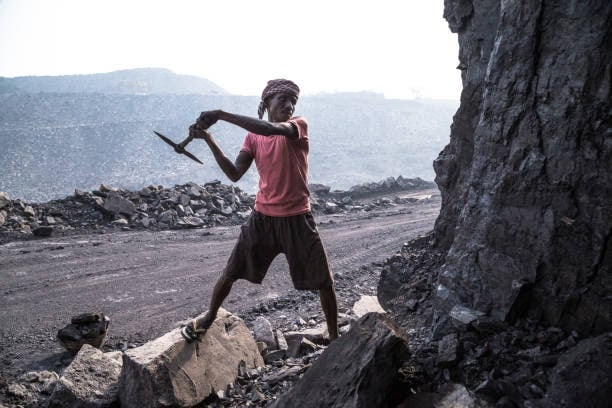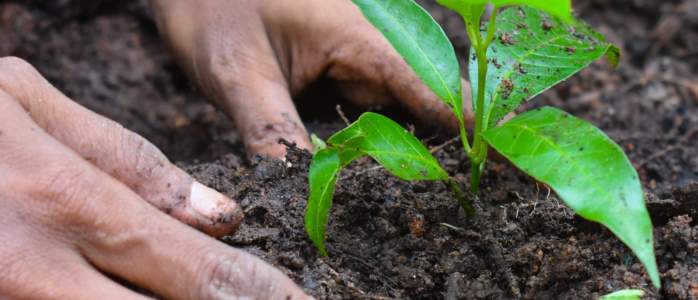



Phasing out coal is key to achieving our climate action targets. In March, UN Secretary General António Guterres described the phasing out of coal from the electricity sector as “the single most important step to get in line with the 1.5 degree-goal of the Paris Agreement.” In India, coal-fired power plants contribute 40 per cent of India’s fossil fuel emissions and 13 per cent of the ambient PM 2.5. Each year, they cause an estimated 112,000 deaths and generate around 200 MT of ash, which could lead to severe health disorders if not properly disposed of or managed. But phasing out coal in India will be uphill task, given its importance not just for the whole economy but also the livelihoods of communities in coal-rich areas. In this blog, we reflect on a few critical challenges and discuss approaches for managing a just transition away from coal.

Coal’s importance in the Indian economy
With India’s power demand expected to double in the coming decade, coal power generation may not yet have reached its peak. Historically, coal plants have accounted for 70 to 80 per cent of the country’s total power generation. This share is estimated to remain above 50 per cent even in 2030. Further, India’s current installed coal capacity of 209 GW is set to expand, with around 57 GW of new capacity1 in the pipeline. Coal is a reliable energy source, especially when compared with the seasonal and diurnal variability of renewables. Abundant in India, it is considered important for the nation's energy security and is a key source of revenue for the government. The state-owned Coal India Limited (CIL) is the largest coal miner in the world; it pays around INR 40,000 crore annually in royalties, cesses, and levies, besides rich dividend payouts to the government. Coal production also benefits the Indian Railways (IR), which cross-subsidises passenger fares with high freight rates for coal transportation.
Challenges to coal phase-out: Impact on livelihoods
Coal production supports millions of lives and livelihoods – either directly or indirectly, and to varying degrees. CIL, the coal mining behemoth, has over 270,000 departmental workers. These are direct dependents who enjoy considerable social security benefits. But the non-replacement of retiree positions has meant a steadily declining employee base, a trend that will likely persist. On the other hand, the rise of outsourcing in mining operations has resulted in a shift towards a less secure contractual labour force, also made up of direct dependents.

A coal exit would jeopardise these livelihoods. It would also leave indirect dependents employed by auxiliary services – who are far greater in number - in the lurch. Examples include coal washery workers, traders, and transporters. Also at risk are those with an induced dependence on coal, such as tea sellers, grocers, and other business owners in economic hubs close to mining areas. Finally, there is the informal coal economy, consisting of small-scale coal operations and illegal trades. Scholars estimate that around 10-15 million dependents live in India’s coal belt. Beyond economic dependence, CIL has frequently assumed the role of welfare provider in coal districts where the state has left a void. It has provided housing, roads, schools, hospitals, water, electricity, and other services in some of the most impoverished parts of the country – although access can often be inequitable.
A just transition: Addressing challenges with thoughtful planning
Given the environmental and social impacts of coal use, a phase-out is inevitable. Still, the shift from coal to a cleaner energy basket should not exacerbate existing inequities or create new ones; it should address the future of communities that have depended on the coal economy for decades. This holistic approach to the phase-out is what we mean by a “just” transition.
In India, such a transition will only unfold gradually. While a complete coal phase-out may take a few decades, we need to lay out a meticulous, long-term plan for coal-dependent regions right now. The phase-out’s pace and intensity will largely depend on top-down governance. Government policy is currently geared towards ramping up coal production to meet growing domestic demand and substitute imports. CIL is beholden to the government, so shutting down its coal operations will require a conscious shift in the coal policy agenda and deliberate planning and action.
Developing the agroforestry, fishery and ecotourism sectors could provide alternative sources of employment and economic opportunities to coal-dependent communities. But it is no easy task to attract fresh investments in historically impoverished regions that have little else besides coal. The government could use the cash crunch induced by the COVID-19 pandemic as an opportunity to direct funds earmarked for economic revival towards the transition. CIL, for its part, understands that the clock is ticking on coal. It is diversifying its operations, offering us some hope that it will continue to invest in its historic coal-belt strongholds.
Finally, decentralising India’s phase-out to the district level will aid the development of unique local solutions. The transition should be based on a socially inclusive and participatory planning process that uses inputs from workers, unions, local communities, district-level administrators, environmental activists, industrialists, and the CIL management.
Srivatsan Anand is a research intern and Danwant Narayanaswamy is a research analyst at Council on Energy, Environment and Water (CEEW). Send your comments to [email protected]
References
1It is likely that 24 GW of this capacity might not get commissioned according to Central Electricity Authority.






Add new comment